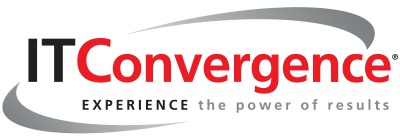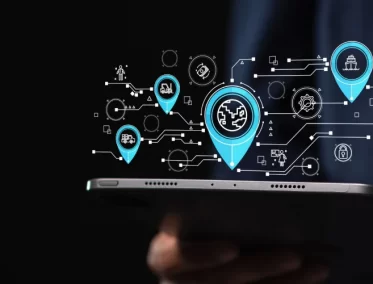For decades, global trade operated on the assumption that efficiency would always trump friction; that goods, components, and data could move across borders with relatively few surprises. But today’s reality tells a different story. In 2025, companies are navigating a landscape where tariff policies shift faster than strategic roadmaps, geopolitical flashpoints disrupt long-standing trade routes, and supply chain resilience has become a boardroom priority.
From Washington to Brussels to Beijing, tariff changes have become tools of economic statecraft. The result? Multinationals must now reprice SKUs, reroute inventory, and reassess vendor risk with each new policy wave. Over 3,000 new tariffs were introduced globally between 2020 and 2024 alone, according to McKinsey & Company, with emerging markets and sectors like pharmaceuticals, semiconductors, and medical devices disproportionately affected.
Meanwhile, the nature of production itself is changing. As Harvard Business Review notes, “automation and digital technologies are reshaping the geography of manufacturing,” allowing businesses to localize or nearshore operations without compromising cost competitiveness.
For organizations still treating tariffs as a temporary disruption or a procurement-only issue, the message is clear: the ground has shifted permanently. The real winners in this new era aren’t just absorbing shocks — they’re reengineering their supply chains around resilience, agility, and strategic optionality, enabling them to respond, pivot, and lead through uncertainty.
Tariffs Are No Short-Lived Political Maneuvers
For many companies, tariffs were once viewed as something to outwait rather than outsmart. That mindset no longer holds. Tariffs have become a permanent lever of economic and industrial policy, as governments use them to pursue national interests, protect critical industries, and reshape the global trade order.
McKinsey’s research confirms what many CFOs and supply chain executives already feel on the ground: tariffs are now a structural feature of the global economy, not a passing phase. Their study shows that nearly 70% of global companies experienced margin erosion or delays due to tariff and trade-related disruption between 2022 and 2024 alone.
This permanence demands a new strategic posture, one that breaks down the traditional silos between trade compliance, sourcing, and finance. Waiting for tariffs to “go away” is no longer a viable strategy; instead, businesses must engineer resilience into their operations, leveraging digital tools, predictive analytics, and diversified sourcing strategies to stay ahead.
We’re seeing this shift especially in sectors like high-tech manufacturing, transportation, defence, healthcare, and chemicals, where tariff exposure is highest and regulatory timelines, such as Brazil’s upcoming CBS/IBS reform in 2026, are tightening. The companies winning in this space are those treating tariff readiness as a core business capability, not a reactive workaround.
AI + Trade Intelligence = The New Risk Radar
Tariff exposure used to be something companies discovered after the damage was done, when containers sat idle in customs, or profit margins vanished under unanticipated duties. But that reactive model doesn’t work in a world where trade policies evolve monthly, and cost predictability is mission-critical.
Enter the new standard: AI-powered trade intelligence. Smart companies are deploying AI, machine learning, and rule-based engines to predict tariff impacts before they hit, simulate sourcing alternatives, and guide classification decisions in real time.
By integrating AI into their trade ecosystems, leading enterprises are:
- Mapping multi-country landed cost exposure to forecast budget impact
- Automating harmonized tariff classification and flagging errors before audits
- Running scenario modeling for policy shifts, geopolitical tensions, and CBP rulings
- Enabling finance and sourcing leaders to collaborate using real-time data
According to recent Gartner-based data, 45% of supply chain leaders are simply passing tariff costs to customers, while another 43% are left absorbing the impact, often without insight. At the same time, more than 30% of SCM teams say tariffs force firefighting in over 44% of their work hours. Intelligent, predictive trade tools aren’t a luxury; they’re a necessity.
This is about strategic foresight. At IT Convergence, we’re helping clients unify trade data, ERP platforms, and cloud analytics into a single pane of glass, so CFOs, compliance leads, and sourcing managers can work together to preempt risk, not just respond to it.
The future of tariff risk management is no longer manual or siloed. It’s predictive, collaborative, and digitally enabled.
Optionality is the New Resilience
For decades, the standard playbook for managing trade risk was binary: relocate operations or absorb the cost. But in today’s tariff-heavy, tech-enabled world, that mindset is dangerously outdated. The smartest organizations aren’t just moving, they’re designing for optionality.
Optionality means having strategic, built-in flexibility in your supply chain:
- The ability to shift suppliers without disrupting production
- The freedom to route goods through alternate trade zones
- The foresight to mitigate costs before policy changes go into effect
While some manufacturers are investing in nearshoring and dual sourcing, others are using cloud-based modeling tools to map supply chain dependencies and simulate tariff scenarios before they unfold. As the Harvard Business Review notes, modern firms are “redesigning supply chains as modular, digitally coordinated networks”—not just moving plants across borders.
At IT Convergence, we work with global clients to operationalize optionality through:
- Advanced classification & compliance mapping
- Real-time landed cost modeling
- Multi-origin sourcing visibility
- Integration of trade data into cloud ERP and analytics systems
With the right digital foundation, companies can test multiple “what-if” scenarios, avoid being blindsided by regulation, and maintain supply assurance even in volatile environments.
In short: resilience is all about sidestepping potential impact altogether.
Getting Ahead of Tariff Risk in a High-Stakes Industry
Imagine this: a U.S.-based healthcare manufacturer is preparing for expanded Section 301 tariffs and looming changes to Brazil’s CBS/IBS tax structure. They rely on components sourced from both China and LATAM, operate under FDA constraints, and can’t afford a single day of disruption.
In the past, some companies might have considered rerouting shipments through a different country to sidestep tariffs. But this approach doesn’t hold up under scrutiny. According to U.S. Customs and Border Protection (CBP), rerouted goods must meet the test of Substantial Transformation, meaning a meaningful, value-added process must occur in the intermediary country that changes the nature or function of the product. Without this transformation, companies risk penalties, seizure of goods, and reputational damage. Today, the stakes are simply too high for shortcuts.
Modernization Is Not Optional But Migration Can Be Modular
One thing is clear amidst global tariff volatility: your supply chain can’t afford to stay reactive. With tariffs becoming both unpredictable and permanent, legacy systems are no longer equipped to deliver the visibility, agility, and compliance controls that modern trade demands.
But full-scale transformation doesn’t have to happen overnight. Forward-thinking enterprises are embracing modular modernization, prioritizing upgrades in the highest-risk areas, like trade compliance, landed cost tracking, and supplier visibility. Instead of boiling the ocean, these companies start by modernizing where it matters most: trade operations.
This is where Oracle Global Trade Management (GTM) delivers a significant edge.
By integrating Oracle GTM into their supply chain tech stack, ITC clients are able to:
- Gain real-time tariff visibility across sourcing channels and jurisdictions
- Automate compliance with CBP rulings and country-specific trade rules
- Improve coordination between procurement, finance, and logistics
- Build digital trade lanes with “what-if” cost simulations for scenario planning
- Create a foundation for end-to-end digital trade orchestration
Whether deployed on-premise or in the cloud, Oracle GTM enables businesses to modernize without disrupting core ERP systems, making it an ideal starting point for companies wary of complex migrations.
Disclaimer:
The information presented in this blog is for educational and informational purposes only. IT Convergence is a technology and ERP systems advisory firm. While we closely monitor the tax, trade, and tariff volatility landscape, we focus on helping organizations prepare their Oracle environments accordingly. We do not provide tax or legal advice, nor do we interpret tax legislation.
We recommend that all organizations consult with qualified tax or legal advisors to assess their specific obligations based on industry, entity classification, and jurisdiction.
IT Convergence supports customers in configuring, optimizing, and future-proofing their systems for compliance but does not assume responsibility for legal or fiscal determinations.



